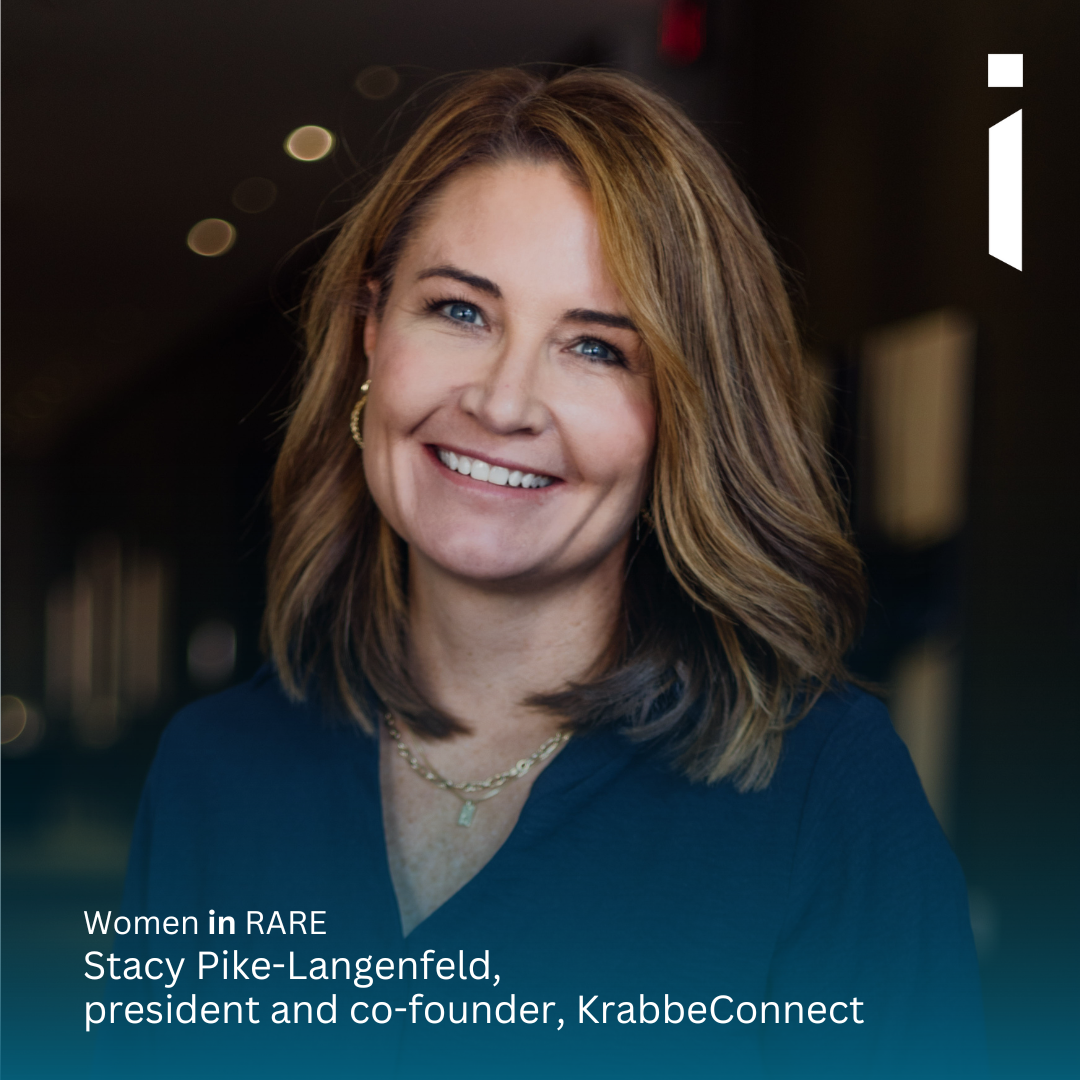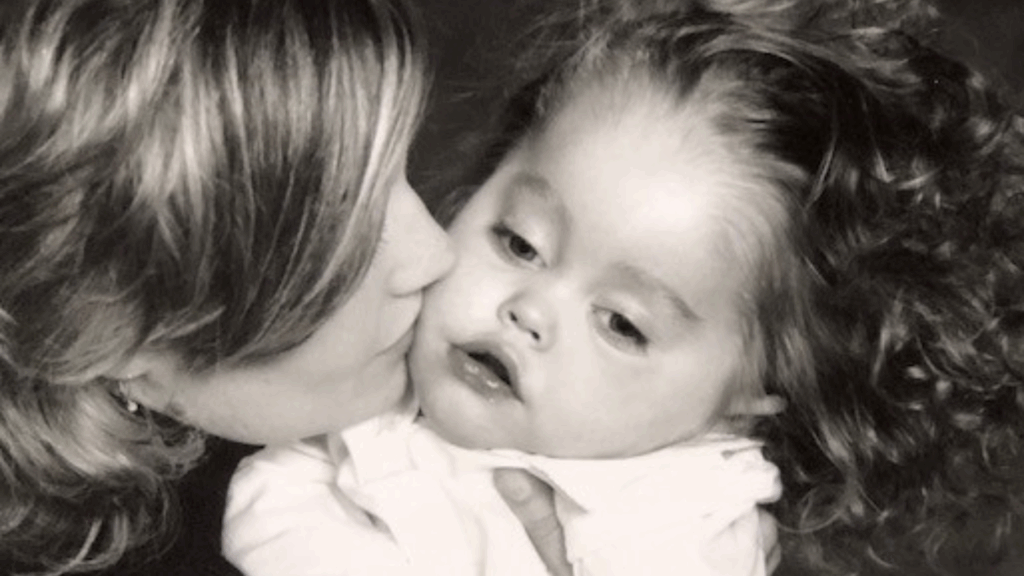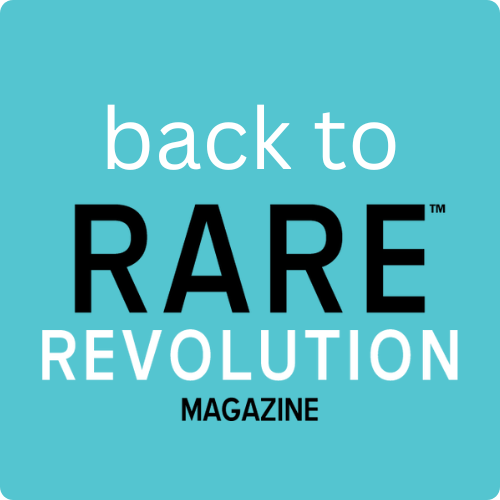Stacy Pike-Langenfeld of KrabbeConnect
Estimated reading time: 7 minutes

“My motivation is simple: I want families affected by rare diseases to have a trusted place for information and I want to help amplify the lived experiences of rare diseases—because their insights are critical to shaping meaningful research and accelerating the path to approved therapies.”
Stacy L Pike-Langenfeld is a seasoned leader with 17+ years of experience in rare disease advocacy, nonprofit leadership, biotech and specialty pharmacy. In her current role as co-founder and president of KrabbeConnect, she has launched vital tools such asKrabbeCURES,spearheaded a landmark FDA Patient-Focused Drug Development meeting and, most recently, facilitated a major collaboration between the University of Minnesota and the University of Rochester, NY, to establish a genotype-phenotype database for Krabbe disease.
Stacy draws on over a decade of experience in rare disease roles at Novo Nordisk, Express Scripts and the Rosenau Family Research Foundation, combined with her deeply personal journey as a caregiver to her daughter with Krabbe, as the foundation of her unwavering commitment to rare diseases. Her work as an author, speaker and principal investigator is fuelled by a passion for amplifying the patient voice and creating meaningful change through collaboration, education and data-driven advocacy.
What motivated you into your chosen career path?
Honestly, I never set out to work with rare diseases even after my daughter, Makayla, died from Krabbe disease in 2003. Frankly, I wanted nothing to do with Krabbe. Looking back, that was my grief oozing out of my pores.
After college, I began in community relations at a news station but soon realised it wasn’t for me. I stumbled upon a role at Hemophilia Health Services supporting families across four states with education and resources to help them better manage their rare disease. From there, opportunities in rare disease kept unfolding, as if I was being guided.
Eventually, I found the strength to return to Krabbe—not from obligation, but from purpose. Today, my motivation is simple: I want families affected by rare diseases to have a trusted place for information and I want to help amplify the lived experiences of rare diseases—because their insights are critical to shaping meaningful research and accelerating the path to approved therapies.
What do you see as some of the opportunities as a woman in your field?
I’m incredibly grateful for my journey in the rare disease space and wholeheartedly encourage other women to seek out their community—a network of peers and mentors who will support, guide and uplift them along the way. Whether driven by lived experience, scientific expertise or a call to serve, the opportunities for women are endless.
It’s quite incredible to see how many women are holding vital roles as a clinician or researcher. Women in these roles have the ability to contribute to clinical trial design, natural history studies and translational research that directly supports rare disease breakthroughs.
At this time, two of the most highly knowledgeable experts in Krabbe disease are woman – Dr Joanne Kurtzberg (Duke University Medical Center) and Dr Deepa Rajan (University of Pittsburgh Medical Center).
Another vital area where women are making a significant impact is genetic counselling. Genetic counsellors play a critical role in the rare disease space by helping families understand complex genetic information, navigate testing options and make informed medical decisions. This role can be challenging, as genetic counsellors must approach each situation with compassion, sensitivity and a commitment to providing unbiased guidance.
Even within regulatory agencies like the NIH, FDA and EMA, women are stepping into influential leadership roles, shaping policy and accelerating access to rare disease therapies. Since transitioning to the philanthropic side of rare disease work, I’ve increasingly found myself in meaningful conversations and collaborations with women who are leading efforts across research, advocacy and policy. Their presence is not only growing—it’s transforming the field with a more collaborative, patient-centered approach.
What are some of the barriers to success as a woman in your field?
I think one of the biggest barriers for women, especially those in leadership positions, is achieving a sustainable work-life balance. It’s the constant emotional juggling act between personal and professional identities. I definitely struggle with it. I want to be fully present for my husband and children—to support, nurture and soak up all the special moments. At the same time, I’m deeply passionate about my career and the work I do. I find real purpose and fulfilment in it.
Another barrier I’ve personally witnessed, on several occasions—thoughts, ideas and factual evidence reflects deeper on leadership when it comes from a male colleague.
I’ve been in situations where I or another female colleague have raised a difficult or important issue—speaking clearly, with facts and conviction—only to be dismissed or overlooked. This can be frustrating and disheartening, ultimately impacting the involvement of well-educated, compassionate and innovative women in rare disease.
Investment levels are higher among male-led start-ups and innovators. Women face high obstacles when it comes to finding and securing funding and resources. Many private and venture capitalists have tight-nit groups with established relationships and women have trouble gaining their attention. As a result, women have to work twice as hard to build their investment network and launching start-ups on significantly less funding.
In the end, as I always tell my kids, there will always be naysayers and challenges that try to stand in your way of success. Use those challenges as stepping stones to grow stronger and just keep putting one foot in front of the other until you reach your goal.
What is one piece of advice you would give your 10-year-old self?
Well, first and foremost, I’d tell her: Just be a kid. Enjoy it. Embrace it. Don’t rush to grow up. I remember being so eager to be older—to do all the things adults did, to have freedom, independence and make my own choices.
But uffdah… if only I knew then what life was going to dish out. The most profound and painful challenge of my life has been coming to terms with the heartbreaking reality that I couldn’t save my daughter’s life. I was 24 years old when Makayla died.

Can you tell us about your current work priorities and focus or a particular project you are working on?
I have initiated a collaborative effort with the University of Minnesota—specifically Dr Paul Orchard, professor in the Department of Pediatrics—to develop a genotype-phenotype database modelled after the successful ALD database. This initiative, now named GenoKrabbe, has grown into a multicenter project with the addition of Dr Robert Stone from the University of Rochester, NY. A substantial portion of the funding has been secured through a grant from the Rosenau Family Research Foundation, with KrabbeConnect contributing supplemental funding and leading outreach and community engagement efforts.
The GenoKrabbe database will be a critical resource for clinicians, researchers and families—enhancing understanding of Krabbe disease onset, symptom progression, genetic variability and prognosis. Beyond diagnosis, this type of database offers wide-reaching benefits, including:
• Improved clinical decision-making
• Accelerate research and potential therapy development
• Support for natural history studies and clinical trial readiness
• Empowerment of families through access to meaningful genetic insights
This project is still in its early stages. It will require approximately two to three years of data collection and input before the database reaches a point where it provides meaningful and usable insights.
In addition to the GenoKrabbe project, a team of us are in the final stages of a manuscript titled: Caregiver-reported disease burden in Krabbe disease: Evaluating outcomes of hematopoietic stem cell transplantation and working on another manuscript titled: Characterizing irritability in Krabbe disease.
There is no shortage of important work to be done, and I remain deeply grateful for the dedication and commitment of our working board. While we currently lack the appropriate financial infrastructure to bring on an executive director, that remains a key goal of mine for KrabbeConnect.
These commitments and efforts are made possible by the many dedicated contributors in the rare disease community, along with the unwavering support of my family, colleagues and friends. I genuinely wouldn’t be where I am today without them.
Connect with Stacy
Women in RARE is a celebration of women working in the RARE space in science, research, industry and advocacy. To access more Women in RARE articles click below.


